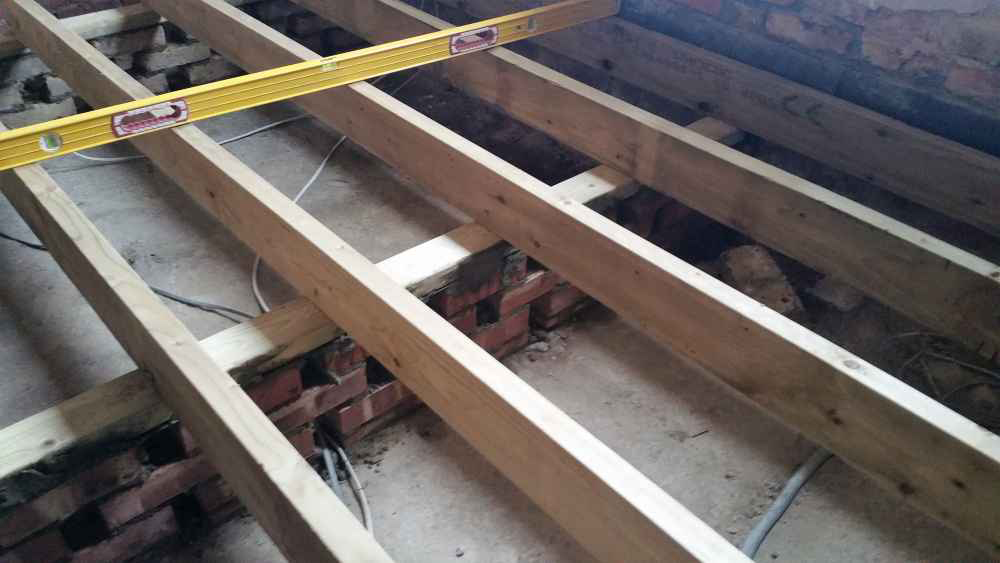Scabbing involves taking a piece of wood and permanently affixing it on the side of the joist over the problem area.
Scabbing floor joists.
The damage extends from the face of the foundation wall inward 5.
Scabbing involves taking piece of wood and fastening it over the.
Nailing two 2x4s together will work to span about three joists unless the sag is under a weight bearing wall.
The scabbing could be done inside or out deck joist or floor joist depending on the sequence of construction.
Also the additional joist do not have to be sistered.
These problems must be addressed firsthand prior to implementing any restoration steps.
The damage is located in the bottom third of the joist.
The scabbing over will be accomplished by structurally attaching a relatively short piece of dimension lumber to one of the joists making up the difference.
For illustration it is shown on the deck joist.
Set a hydraulic jack and post under the beam and jack up the joists about 1 8 in.
Generally and roughly speaking a notch in the top of a joist will reduce the span of a joist.
Most often floor joists need to be sistered because of two problems either water damage which leads to rot or termite damage that crumbled the joist.
Again it depends where the notch is located.
A day until they re level.
Scabbing is an unattractively named but effective technique that can fix minor problems that are affecting floor joists.
Jacking them up too fast may cause cracks in the walls and floors overhead.
The joists are damaged at one end.
Small areas of damage to floor framing can be repaired using a method called scabbing in which you will add structurally sound wood to damaged floor joists without removing the damaged joists.
Some of the joists may have damage up further into the joist.
Scabbing a floor joist or framing member scabbing is effective technique that allows you to add strength to and fix minor problems that are affecting floor joists.
Floor joists lapping splicing 2013 california building code section 2308 8 table 2304 9 1 the following are general requirements for floor joist lapping and splicing based on the 2013 ca building code.

